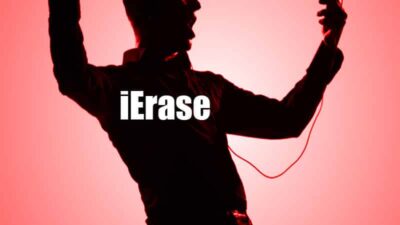 SIRIUS Satellite Radio CEO, Mel Karmazin, revealed that he recently had talks with Apple CEO Steve Jobs about producing an iPod with a built-in satellite radio. “I’ve spoken to Steve Jobs,” Karmazin said Wednesday at the McGraw-Hill Companies’ 2005 Media Summit in New York. He declined to elaborate on his comments other than to say that the “current thinking” at Apple is that “they don’t need to put a satellite radio in their box.” Karmazin said Sirius has been talking to many potential partners about getting satellite radio in their products.
SIRIUS Satellite Radio CEO, Mel Karmazin, revealed that he recently had talks with Apple CEO Steve Jobs about producing an iPod with a built-in satellite radio. “I’ve spoken to Steve Jobs,” Karmazin said Wednesday at the McGraw-Hill Companies’ 2005 Media Summit in New York. He declined to elaborate on his comments other than to say that the “current thinking” at Apple is that “they don’t need to put a satellite radio in their box.” Karmazin said Sirius has been talking to many potential partners about getting satellite radio in their products.
A deal with Apple would be huge or either XM or SIRIUS who are currently engaged in a heated battle for marketshare. Satellite radio analyst, April Horace, thinks that a combo iPod/satellite radio would be “the killer app.” However she believes there are major “legal and technical hurdles to clear before satellite radio can be added to the iPod or any other MP3 player like it.”
An Apple spokesperson did not immediately have a comment on Karmazin’s statement.
REVIEW: Audiovox SIR-PNP2 Sirius Satellite Radio Receiver
Here to bring you commercial-free music, sports, and news listening in a wealth of genre-based satellite streams is the Audiovox SIR-PNP2 SIRIUS radio receiver. Use of the receiver requires activation of a subscription to Sirius Satellite Radio ($12.95 per month or a one-time fee of $499.99). You’ll also need a portable, home, or car docking apparatus. The receiver pulls in the signal, while a docking station provides traditional features like speakers, headphone jacks, and antennas, depending on the accessory. The receiver will produce no audio without an ancillary listening device.
We tested the receiver in 2 different systems: the Audiovox SIR-BB1 Sirius satellite radio portable boombox and the Audiovox SIR-CK1 sirius satellite radio shuttle car kit. Using the receiver under different circumstances–both stationary and mobile–gave a rounded portrait of both the Sirius service and the performance of this particular receiver. As a paid alternative to traditional FM and AM radio, the Sirius service definitely has its benefits. Tons of stations and no commercials–it’s hard to beat that. With Sirius, great music is always easy to find.
With traditional radio, the audio signals ride “carrier frequencies” (modulated waves of air) that a receiver subtracts before rendering a wave as audio. With digital radio, frequencies carry data rather than audio. A receiver simply performs the step of turning the numeric transmission back to audio, much as the decoder chips and analog stage of a CD player turns its digital data into sound. This means you’ll hear no static, fuzz, or spurious background noises from Sirius radio. The end result is clear and clean. It also means, however, that when reception gets hazy your audio program mutes briefly rather than getting fuzzy or slightly more distant-sounding. This can prove disconcerting or downright irritating if you’re not listening in an area with perfect reception.
When you’re not moving, reception tends to be better, though still potentially imperfect, depending on the location of Sirius’ satellites. (Owners of digital cable or satellite television will know exactly what they’re in for.) But by and large our stationary testing proved seamless, letting us enjoy the many stations included in the Sirius package.
Setup and operation of the receiver is a breeze. There are 30 channel presets (a group of 10 buttons with selectable A, B, and C bands) and an intuitive scroll wheel with push selection for menu navigation.
Lovers of pop and rock music fare the best, but there’s a little something for everyone. If you’re starved for underplayed classic rock, you’ll revel in a channel known as The Vault (“deeper classic rock”), and ’80s fans can take their pick of Big ’80s, Hair Nation, and First Wave (“classic alternative”). Parents and kids–we checked–will relish the SIRIUS children’s channel, especially in the car.
Unexpectedly rich are the news offerings, which include everything from the major cable TV networks to radio staples like NPR and the BBC, as well as 7 sports networks and a host of “entertainment” channels (including Court TV). The lion’s share of the channels in the dance/electronica group falls to the dance category, leaving it to the lone Chill station to weave a blend of electronica and other hip but mellow (i.e., nondanceable) music. There are only 3 classical-music channels, and for those with short attention spans one of them plays movements of larger works rather than complete pieces straight through.
Beyond the reception issue, the only other major drawback is sound quality, which some may find subpar. Sirius describes its sound as “digital quality,” a euphemism for “digital audio with a bitrate so low that we don’t want to scare people by revealing what it is.” Whatever it is, its character is very close to what you’d hear from 96 kbps MP3–clear and listenable, but lacking depth, fullness, high-frequency extension, and dynamic range (though radio’s always been super compressed). Your awareness of these shortcomings will depend to some degree on the caliber of your playback system. We noted that the classical stations seem to have better sound than the rock/pop stations.
Overall, we found the sound quality to be better than AM radio, nearly or equally as good as analog FM stations, but worse than 128 kbps MP3 and inferior to high-quality analog cassette tapes (though there’s no tape hiss with Sirius). But for broadcast music programming, the Sirius lineup is hard to beat and nothing short of a joy to listen to. For additional subscription details, please visit www.sirius.com.
Pros:
- Simple setup
- Intuitive operation
- Easy to find great music
- No commercials
- Rich news selection
- 30 station presets
- Modular construction fits a host of docking devices
- Display is highly legible in both bright and dim environs
Cons:
- Periodic lost-signal mutes in transit
- Substandard sound quality
- No new-age channel
- Limited jazz, classical, and world-music offerings
What’s in the Box
Receiver (shuttle) unit, remote control (P/N1363539), 2 AA remote batteries, and a user’s manual.

Frank Wilson is a retired teacher with over 30 years of combined experience in the education, small business technology, and real estate business. He now blogs as a hobby and spends most days tinkering with old computers. Wilson is passionate about tech, enjoys fishing, and loves drinking beer.


















Leave a Reply